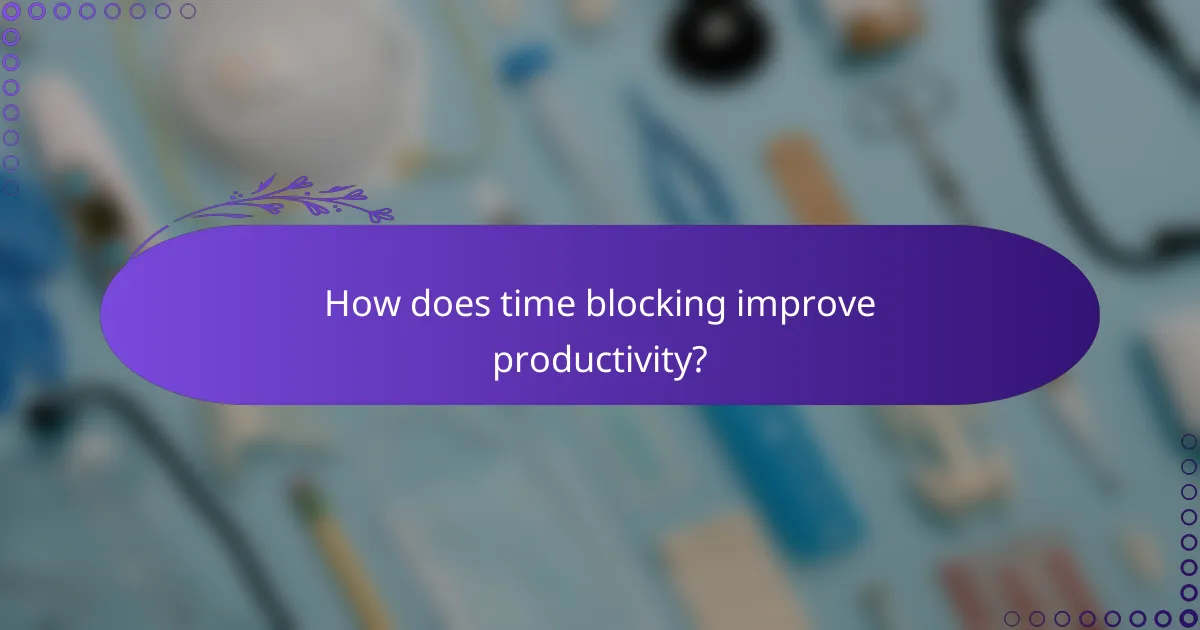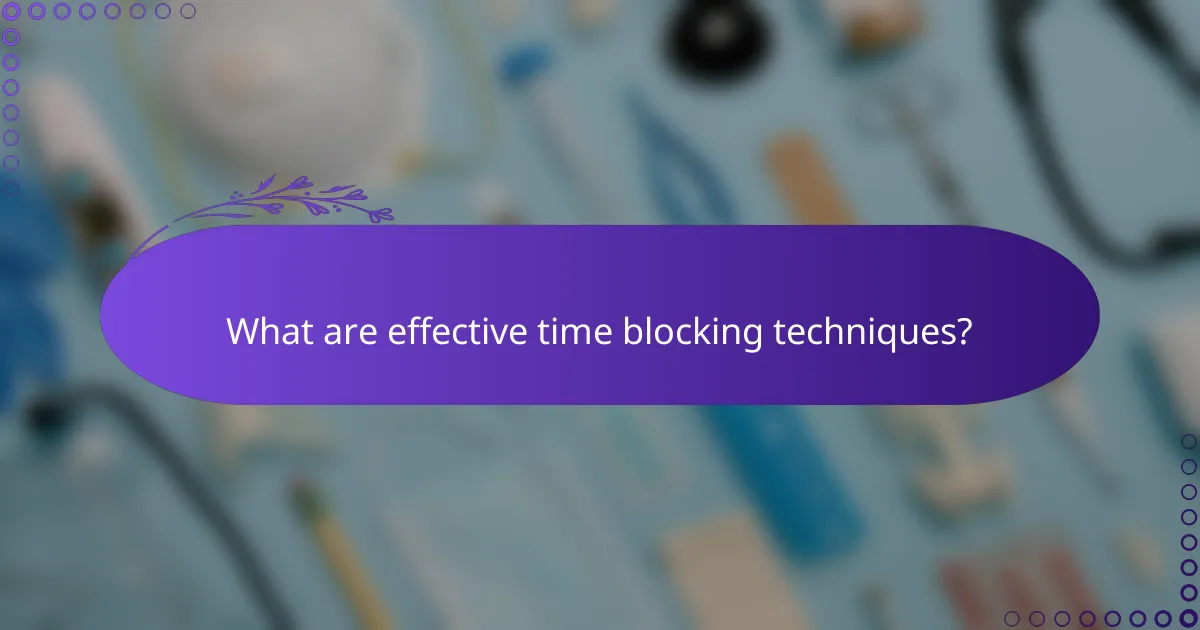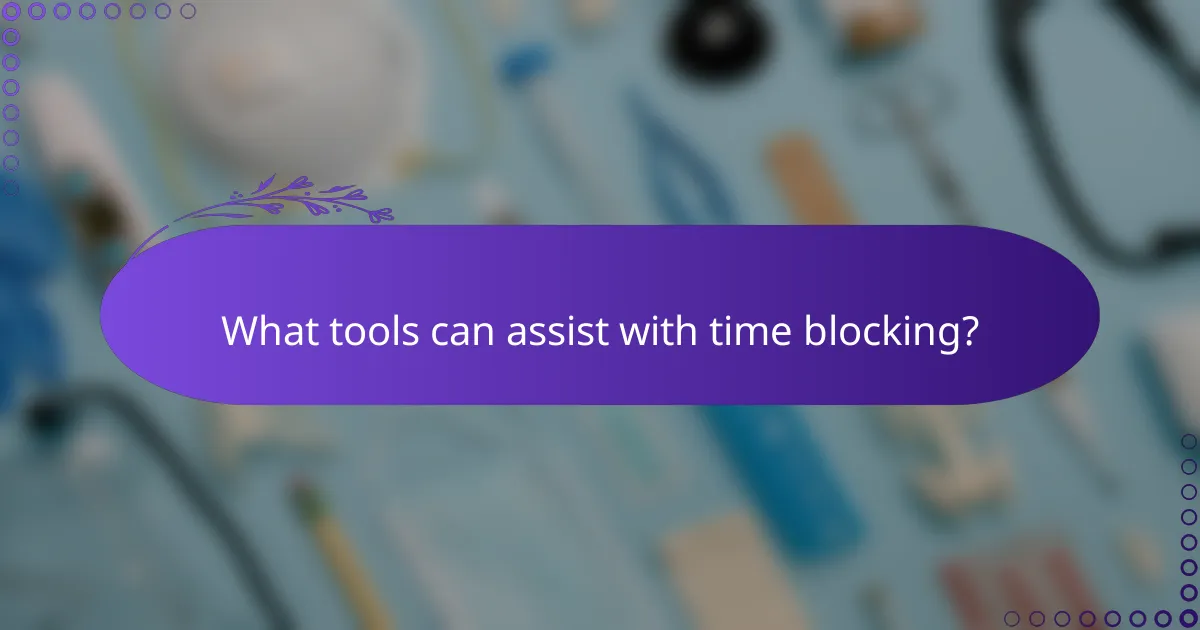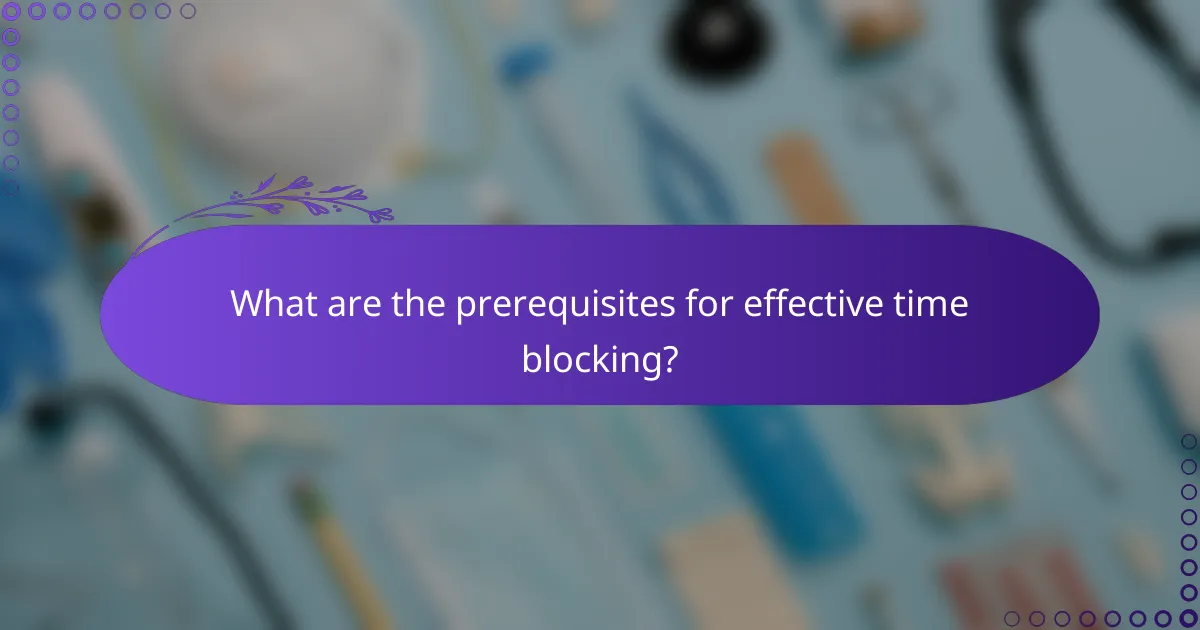Time blocking is a powerful productivity technique that involves dedicating specific time slots to focused work on tasks, which helps minimize multitasking and interruptions. By providing a structured approach to scheduling, it enhances concentration and allows individuals to prioritize their workload effectively, leading to reduced stress and improved time management.

How does time blocking improve productivity?
Time blocking enhances productivity by allocating specific periods for focused work on tasks, minimizing multitasking and interruptions. This structured approach helps individuals prioritize their workload and maintain concentration, ultimately leading to more efficient use of time.
Enhanced focus
Time blocking promotes enhanced focus by dedicating uninterrupted time slots to specific tasks. When you know you have a set period to work on something, it becomes easier to immerse yourself in that task without the temptation to switch to something else. For instance, blocking out 90 minutes for writing can significantly boost your output compared to sporadic writing sessions throughout the day.
To maximize focus, consider using techniques like the Pomodoro Technique within your time blocks, where you work for 25 minutes and then take a short break. This can help maintain high levels of concentration while preventing burnout.
Reduced distractions
By designating specific times for tasks, time blocking helps reduce distractions from external sources and internal thoughts. When you commit to a time block, you can inform colleagues or family members of your unavailability, which minimizes interruptions. For example, if you block out time for emails, you can silence notifications and focus solely on that task.
To further reduce distractions, create a conducive work environment by decluttering your workspace and using apps that limit access to distracting websites during your time blocks.
Better time management
Time blocking enhances better time management by allowing you to visualize your entire day or week at a glance. This method helps you allocate time according to task priority and deadlines, ensuring that critical tasks receive the attention they need. For example, if you have a project deadline, blocking out time for research, drafting, and revisions can keep you on track.
Consider using a digital calendar or planner to set your time blocks, as this can provide reminders and help you adjust as needed. Regularly reviewing your time blocks can also help you identify areas for improvement in your scheduling.
Increased accountability
Time blocking fosters increased accountability by creating a clear schedule that outlines what you intend to accomplish. When you set specific time frames for tasks, you are more likely to hold yourself accountable for completing them. Sharing your time blocks with a colleague or mentor can further enhance this accountability.
To strengthen accountability, consider tracking your progress at the end of each day or week. Reflecting on what you accomplished versus what you planned can help you adjust your future time blocks for better results.

What are effective time blocking techniques?
Effective time blocking techniques help individuals manage their schedules by allocating specific time slots for tasks, enhancing focus and reducing stress. These methods provide structure to the day, making it easier to prioritize and accomplish goals.
Pomodoro Technique
The Pomodoro Technique is a time management method that breaks work into intervals, traditionally 25 minutes in length, separated by short breaks. This approach helps maintain high levels of focus while preventing burnout.
To implement this technique, choose a task, set a timer for 25 minutes, and work on it until the timer goes off. Afterward, take a 5-minute break to recharge. After completing four cycles, take a longer break of 15-30 minutes.
Common pitfalls include underestimating the time needed for tasks or getting distracted during work intervals. Stick to the timer to maximize productivity.
Daily time blocking
Daily time blocking involves scheduling specific blocks of time for different tasks throughout the day. This method allows for a clear overview of what needs to be accomplished and helps in prioritizing effectively.
To practice daily time blocking, start by listing your tasks and estimating how much time each will take. Then, allocate time slots in your calendar, ensuring to include breaks and buffer time for unexpected events. Aim for 3-5 major blocks per day to maintain focus.
Be cautious of overloading your schedule. It’s better to have fewer tasks with higher quality than to rush through many tasks without completing them effectively.
Weekly planning sessions
Weekly planning sessions involve setting aside time at the beginning or end of each week to review goals, assess progress, and plan the upcoming week. This technique helps maintain alignment with long-term objectives and ensures that daily tasks are relevant.
During your weekly planning session, reflect on what you accomplished in the previous week and identify any obstacles faced. Then, outline your priorities for the upcoming week, breaking them down into daily tasks. Aim for a balance between work and personal time.
Common mistakes include failing to adjust plans based on past performance or not allowing enough time for personal reflection. Make this session a priority to enhance productivity and reduce stress throughout the week.

How can time blocking reduce stress?
Time blocking can significantly reduce stress by providing a structured approach to managing tasks and responsibilities. By allocating specific time slots for different activities, individuals can focus better, minimize distractions, and create a sense of control over their schedules.
Clearer priorities
Time blocking helps clarify priorities by forcing individuals to identify and allocate time for their most important tasks. This process encourages a focus on high-impact activities, reducing the tendency to get lost in less critical tasks. For example, setting aside a block of time each morning for strategic planning can ensure that essential projects receive the attention they deserve.
To effectively prioritize, consider using a simple matrix to categorize tasks by urgency and importance. This can help in deciding which activities should be scheduled first during your time blocks.
Structured routines
Establishing structured routines through time blocking can lead to more predictable and manageable days. By consistently following a set schedule, individuals can reduce decision fatigue and streamline their workflow. For instance, designating specific hours for emails, meetings, and focused work can create a rhythm that enhances productivity.
To maintain these routines, it’s beneficial to review and adjust your blocks weekly. This allows for flexibility while ensuring that your schedule remains aligned with your goals.
Improved work-life balance
Time blocking can enhance work-life balance by clearly delineating work hours from personal time. By scheduling breaks and leisure activities alongside work tasks, individuals can ensure they are not overwhelmed by their professional responsibilities. For example, blocking out time for exercise or family activities can foster a healthier lifestyle.
To achieve a better balance, aim to allocate equal time for work and personal activities each week. This can help prevent burnout and promote overall well-being.

What tools can assist with time blocking?
Several tools can enhance your time blocking efforts by helping you organize tasks, schedule events, and track progress. Utilizing these tools effectively can lead to improved focus and reduced stress.
Google Calendar
Google Calendar is a versatile tool for time blocking, allowing users to create events and allocate specific time slots for tasks. You can color-code different activities, making it easier to visualize your day at a glance.
To maximize its effectiveness, set reminders for each task and use the “repeat” function for recurring activities. This helps maintain a consistent schedule and reduces the need for constant rescheduling.
Trello
Trello is a project management tool that uses boards, lists, and cards to organize tasks visually. You can create a board specifically for time blocking, where each list represents a day or week, and cards represent tasks to be completed in those time frames.
Utilize Trello’s due dates and checklists within cards to keep track of progress. This visual representation can help you stay focused and accountable, making it easier to see what needs to be done next.
Todoist
Todoist is a task management app that allows you to create and prioritize tasks efficiently. You can set deadlines and reminders, which is essential for time blocking as it keeps your tasks organized and time-sensitive.
Consider using labels and filters to categorize tasks by project or priority level. This can help you focus on high-priority items during your designated time blocks, ensuring that you are making the most of your available time.

What are the prerequisites for effective time blocking?
Effective time blocking requires a clear understanding of your personal goals and the ability to identify time wasters. By establishing these foundations, you can create a structured schedule that enhances focus and reduces stress.
Understanding personal goals
To successfully implement time blocking, you must first clarify your personal goals. This involves identifying both short-term and long-term objectives, which can guide how you allocate your time throughout the week.
Consider using the SMART criteria—Specific, Measurable, Achievable, Relevant, and Time-bound—to refine your goals. For instance, instead of saying “I want to exercise more,” specify “I will jog for 30 minutes three times a week.” This clarity helps you prioritize tasks effectively.
Identifying time wasters
Recognizing time wasters is crucial for effective time blocking. Common distractions include social media, excessive meetings, and multitasking, which can significantly reduce productivity.
To identify your specific time wasters, keep a log of your daily activities for a week. Note when you feel most distracted and what activities consume your time without adding value. Once identified, you can create strategies to minimize or eliminate these distractions.
For example, set specific time limits for checking emails or social media, and use tools like website blockers during your focused work periods. This proactive approach can enhance your focus and make your time blocking more effective.


